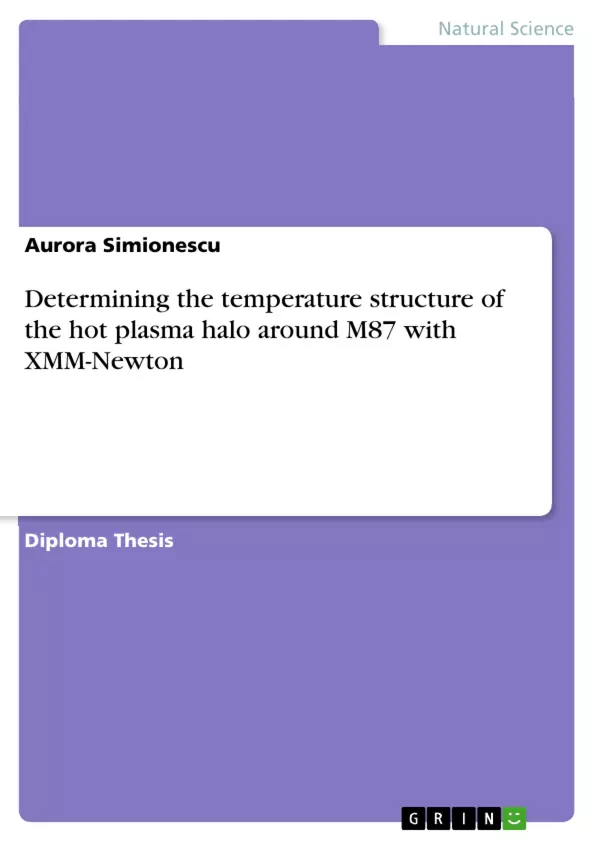We aim to analyze the most recent and deepest observation of M87 with the XMM-Newton X-ray telescope, in order to further understand the substructure and heavy element abundance profiles in the gas halo. The first and most important step in this direction is to understand the temperature distribution, from which entropy and pressure maps can be generated which are the best indications of existing substructure and especially shocks and cavities due to the interaction between the central supermassive black hole and the surrounding medium. A good
understanding of the temperature maps is also needed for detailed analysis of the distribution of heavier elements produced by supernovae and mixed into in the ICM, since most emission lines are strongly temperature-dependent. We present and compare in this work two independent methods for determining the temperature profile in M87 and their results.
Table of Contents
- 1 Introduction
- 1.1 Clusters of galaxies
- 1.2 The cooling flow problem
- 1.2.1 Cooling flows before XMM-Newton and Chandra
- 1.2.2 The fall of the cooling flow model
- 1.2.3 Emerging new models for cooling core clusters
- 1.3 Previous observations of M87
- 1.4 Scientific goals of this work
- 2 Observational details
- 2.1 XMM-Newton
- 2.2 The present observation of M87
- 3 Data analysis methods
- 3.1 X-ray brightness profile
- 3.2 Temperature profile
- 3.2.1 Determining the temperature from color maps
- 3.2.2 Determining the temperature from spectral fitting
- 4 Results and interpretation
- 5 Summary and Outlook
Objectives and Key Themes
This work aims to analyze the deepest XMM-Newton observation of M87 to create detailed temperature maps of the hot plasma halo. This analysis seeks to improve understanding of the heating mechanism preventing the cooling flow predicted by earlier models and the physics of the intracluster medium around the central galaxy.
- The cooling flow problem in galaxy clusters
- Temperature structure of the hot plasma halo around M87
- Analysis of XMM-Newton data
- Heating mechanisms in galaxy clusters
- Intracluster medium physics
Chapter Summaries
Chapter 1: Introduction introduces the cooling flow problem in galaxy clusters and highlights the improved observational capabilities of Chandra and XMM-Newton. It establishes M87 as a key object for studying this problem and states the aim of determining accurate temperature maps to understand the heating mechanism.
Chapter 2: Observational Details describes the XMM-Newton satellite and specifics of the M87 observation.
Chapter 3: Data Analysis Methods outlines the techniques used to derive the X-ray brightness and temperature profiles from the XMM-Newton data, including methods for temperature determination from color maps and spectral fitting.
Chapter 4: Results and Interpretation (Note: Summary of this chapter is omitted to avoid spoilers).
Keywords
M87, galaxy clusters, cooling flow, XMM-Newton, X-ray astronomy, temperature profile, intracluster medium, heating mechanism, hot plasma halo, spectral fitting.
- Citation du texte
- Aurora Simionescu (Auteur), 2006, Determining the temperature structure of the hot plasma halo around M87 with XMM-Newton, Munich, GRIN Verlag, https://www.grin.com/document/120885



